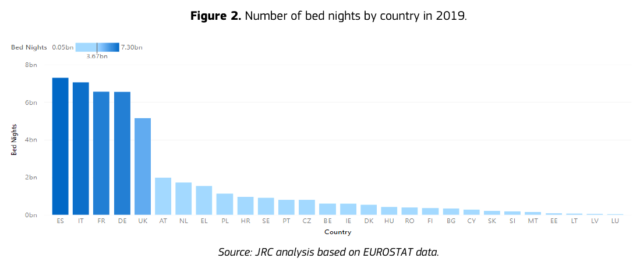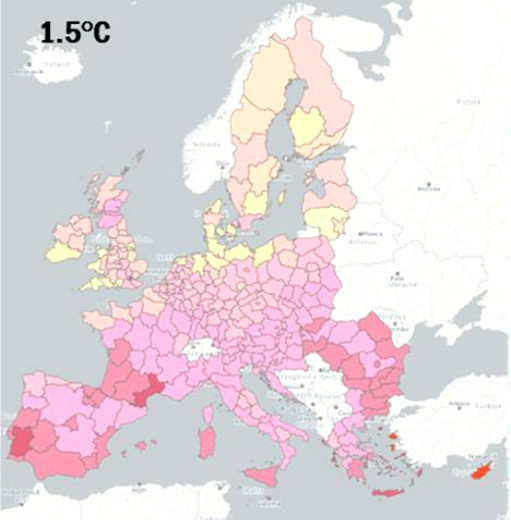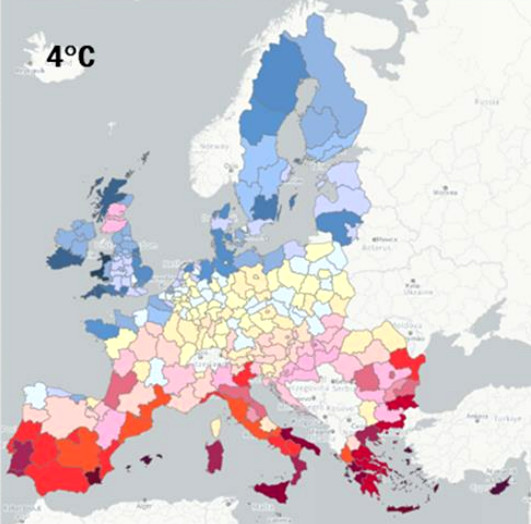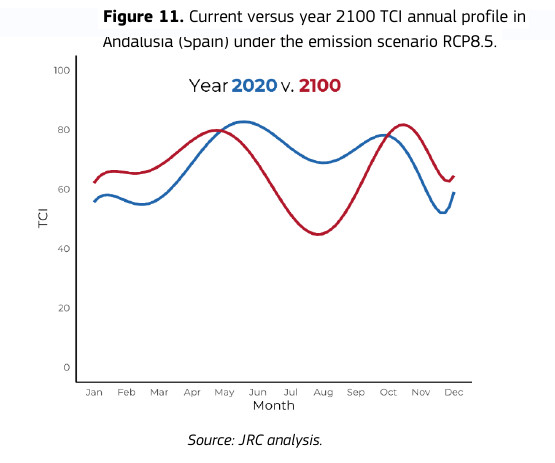
Climate change will gradually have an impact on tourism in Europe. Year 2100 is still relatively far away, but a research has been published by EU that takes such a long term view. Summers in regions of south Europe are getting so warm that tourism is expected to decrease, whereas north Europe is expected to become pleasantly warm, drawing more tourists. This and other long term predictions have been made by researchers in a report prepared for the European Union Commission.
The report Regional impact of climate change on European tourism demand examines the ways tourism follows climate change by 2100 in Europe. Because temperatures are rising, tourists will seek destinations that are comfortable to visit – and some of the destinations won’t be the same as they are today. Europe is the world’s most visited region (51% of international travel goes there), making tourism an important industry for the entire continent, and a key industry for economies of some countries.
The key results of the report indicate that if overall temperatures rise by 1.5C by 2100, it won’t have a significant impact on tourism in Europe. Only the southernmost and northernmost regions experience major changes. The biggest loser is expected to be Cyprus and winner Finland. Cyprus as a tourism destination will lose visitors because of high temperatures, but Finland’s southern and western coasts will gain visitors as the region becomes warmer.
In the 4C warming scenario, tourists are expected to broadly reconsider their vacation destinations. A north-south divide that exists today in a sense that tourists from north Europe want to travel to south, but tourists from south are not likely to head to the north will change. As popular coastal destinations in south Europe become (in 4C warming scenario) too warm for comfortable vacations, tourists are likely to choose central and north Europe. The biggest losers of tourism are predicted to be coastal areas in south Europe, and biggest winners destinations in central and northern Europe.
The European countries that have attracted most travelers in recent years
Five countries that draw the vast majority of visitors in Europe:
- Spain
- Italy
- France
- Germany
- UK

The statistics is based on Eurostat data from 2019, whose numbers have been tallied up from nights stayed in hotels and other accommodations. After the top five, the most visited countries (based on the number of bed nights) are in descending order: Austria, Netherlands, Greece, Poland, Hungary, Sweden, Portugal, Czech Republic, Belgium, Ireland, Denmark, Hungary, Romania, Finland, Bulgaria, Cyprus, Slovak, Slovenia, Malta, Estonia, Lithuania, Latvia, Luxembourg.
How the gradual change of climate in Europe will affect where tourists travel?
The researchers who wrote the report Regional impact of climate change on European tourism demand have applied a number of models that predict how climate change affects regions of Europe. They calculated results for four scenarios: average temperatures will rise by 1.5C, 2C, 3C, and 4C by year 2100.
From a tourist’s point of view, temperature alone doesn’t make a destination desirable or undesirable. An index known as Tourism Climate Index (TCI) takes into account humidity, daily precipitation, wind conditions, and cloudiness of a destination as well.
When these tools are applied to predictions where tourists want to go in 2100, the following maps show which European regions gain visitors while others lose.

climate change on European tourism demand.
The 1.5C warming scenario for 2100 shows that primarily Cyprus, Greek Islands, and south Portugal are losing their attractiveness as summer vacation destinations because of heat. North Europe is getting more pleasant as temperatures slightly rise.

climate change on European tourism demand.
The extreme 4C warming scenario shows clear north-south divide in Europe in a projection for year 2100. Tourism in North and Central Europe will benefit from warmer climate, and practically entire south Europe is expected to lose visitors, especially in summer.
Let’s see how the climate in popular year-round destination Andalucia province in southernmost Spain might look like in 2100.

The blue line in the graph indicates the attractiveness (TCI, Tourism Climate Index) of Andalucia as a holiday destination during year 2020. Winter months December, January and February are the least desirable, but the rest of the year is fine. The change in 2100 in Andalucia is dramatic as depicted by the brown line in the graph. Summer from June to September have become so uncomfortable because of heat that it is regarded the worst time of the year to visit Andalucia.
There is another message in this prediction. Even if summers become unbearable warm in south Europe, autumn, winter and spring become warmer as well. Winter escapees, digital nomads, and remote workers from north certainly appreciate warmer winter months and perhaps the new beach season will be spring and autumn.
